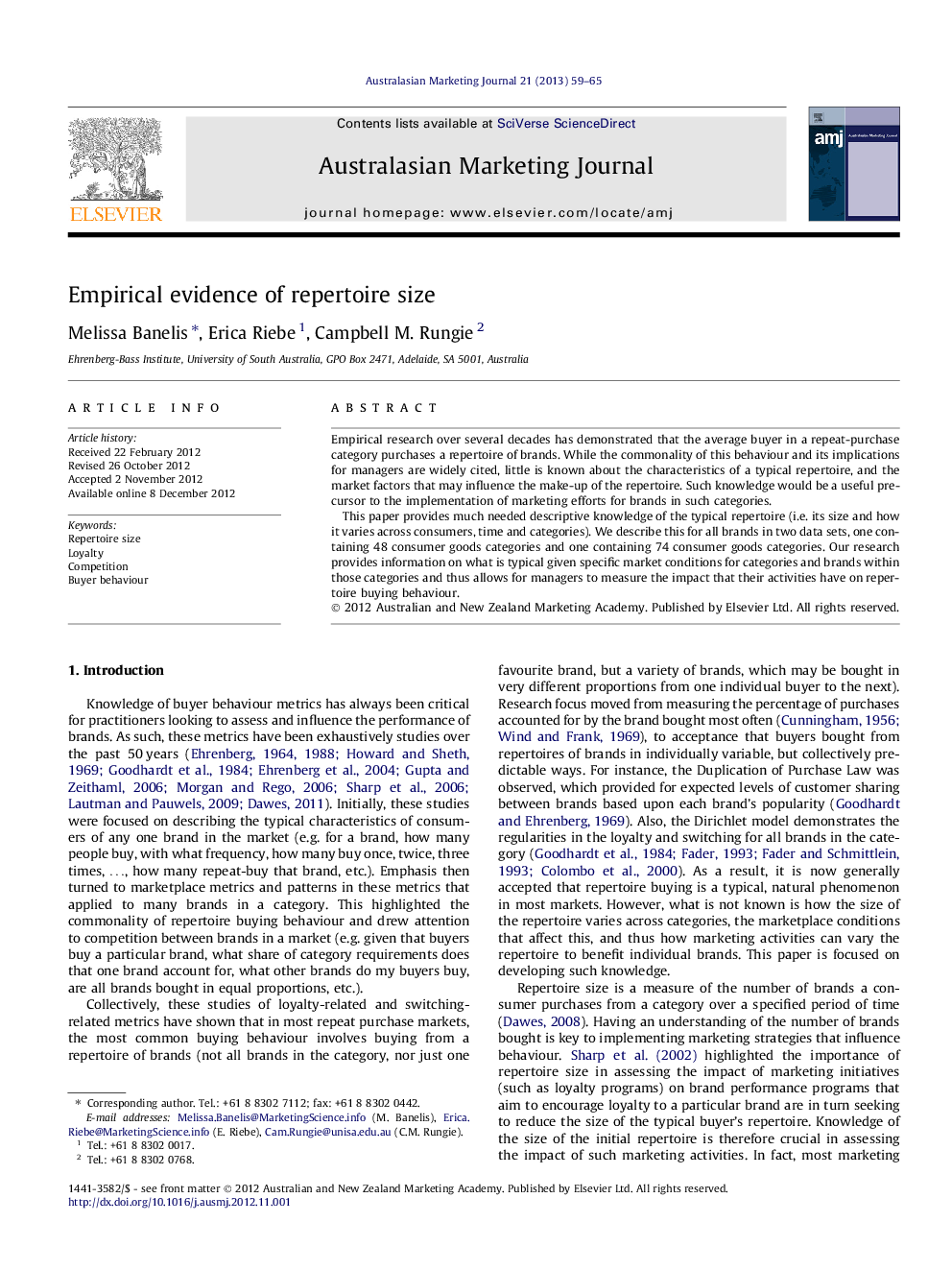| Article ID | Journal | Published Year | Pages | File Type |
|---|---|---|---|---|
| 1026961 | Australasian Marketing Journal (AMJ) | 2013 | 7 Pages |
Empirical research over several decades has demonstrated that the average buyer in a repeat-purchase category purchases a repertoire of brands. While the commonality of this behaviour and its implications for managers are widely cited, little is known about the characteristics of a typical repertoire, and the market factors that may influence the make-up of the repertoire. Such knowledge would be a useful precursor to the implementation of marketing efforts for brands in such categories.This paper provides much needed descriptive knowledge of the typical repertoire (i.e. its size and how it varies across consumers, time and categories). We describe this for all brands in two data sets, one containing 48 consumer goods categories and one containing 74 consumer goods categories. Our research provides information on what is typical given specific market conditions for categories and brands within those categories and thus allows for managers to measure the impact that their activities have on repertoire buying behaviour.
► We analyse two data sets to describe repertoire size. ► Yearly average repertoire size is found to be two. ► Yearly average repertoire size did not vary substantially between categories. ► The size of a buyer’s repertoire can be established within a few months. ► Appears to be a limit in the number of brands buyers will include in their repertoire.
